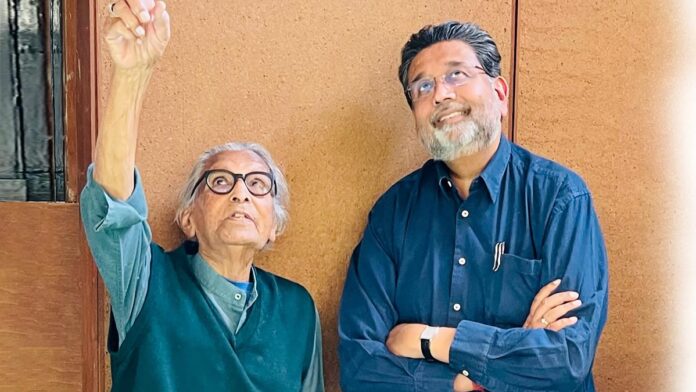
Harshavardhan Neotia (right) with B.V. Doshi.
| Photo Credit: Special arrangement
The property that got Harshavardhan Neotia the Padma Shri, almost did not get built. Master architect B.V. Doshi would not have designed the social housing project, Udayan, which means ‘rising’. Six months after the septuagenarian Doshi had turned down Neotia, citing a lack of direct flights to Kolkata, the architect happened to be travelling to Kolkata to deliver a lecture. Doshi was already a well-known name in the field having won the Aga Khan Award for Architecture for Aranya Housing in Indore. Neotia invited him for a family meal, when the architect “bonded with each family member over different things — with my mother over her love for classical music, and my uncle over art”. With Suresh Neotia being an art collector himself, it turned out to be a long, interesting evening. Doshi agreed to go see the site and ultimately decided to take on the project with just one prerequisite. “He said he would be coming down only once a year and that other architects would oversee matters from Kolkata,” Neotia recalls.
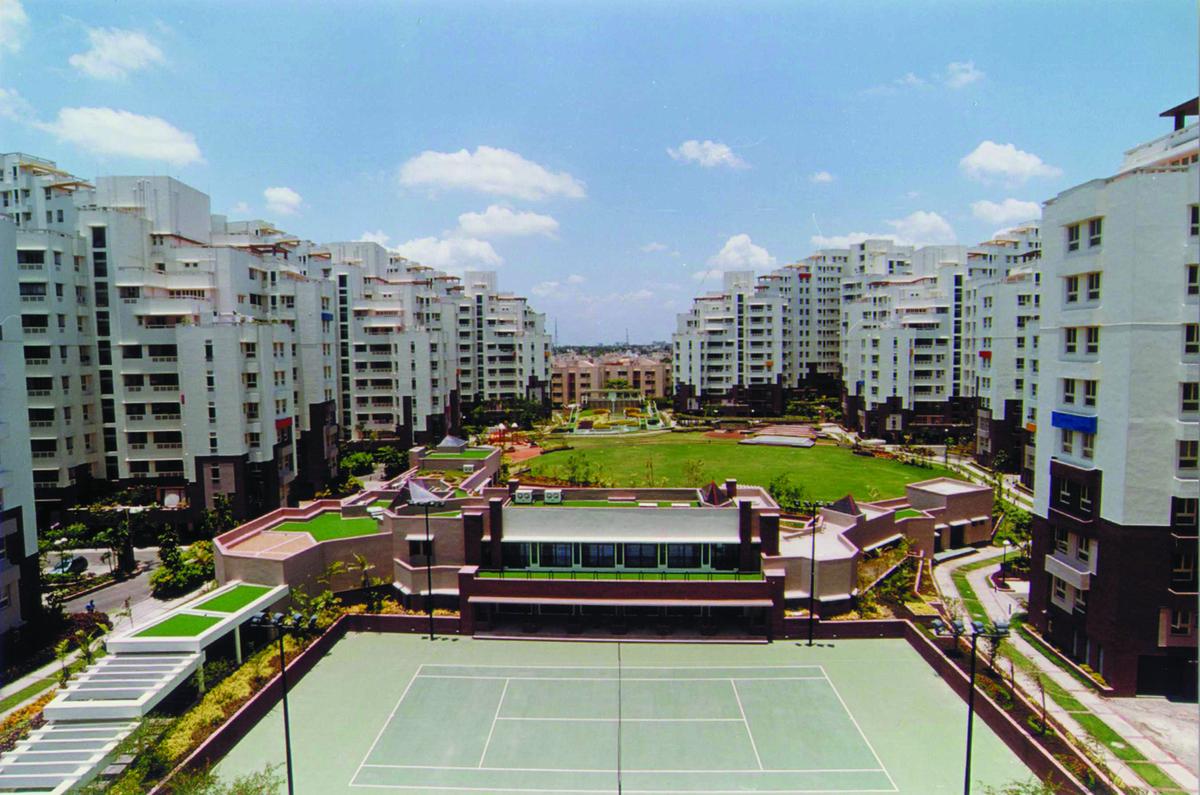
Udayan~The Condoville, Kolkata’s first condominium on PPP (Public-Private Partnership) model.
| Photo Credit:
Special arrangement
Doshi ended up travelling to Kolkata several times during the time Udayan was built and interacted closely with Neotia. It was perhaps this project with Doshi that helped create a design language for Ambuja Neotia Group. “B.V. Doshi’s aesthetic is deeply rooted in Indian culture, emphasising harmony with nature. In Udayan, this manifests through its integration with the landscape, open spaces, and use of local materials,” says Neotia.
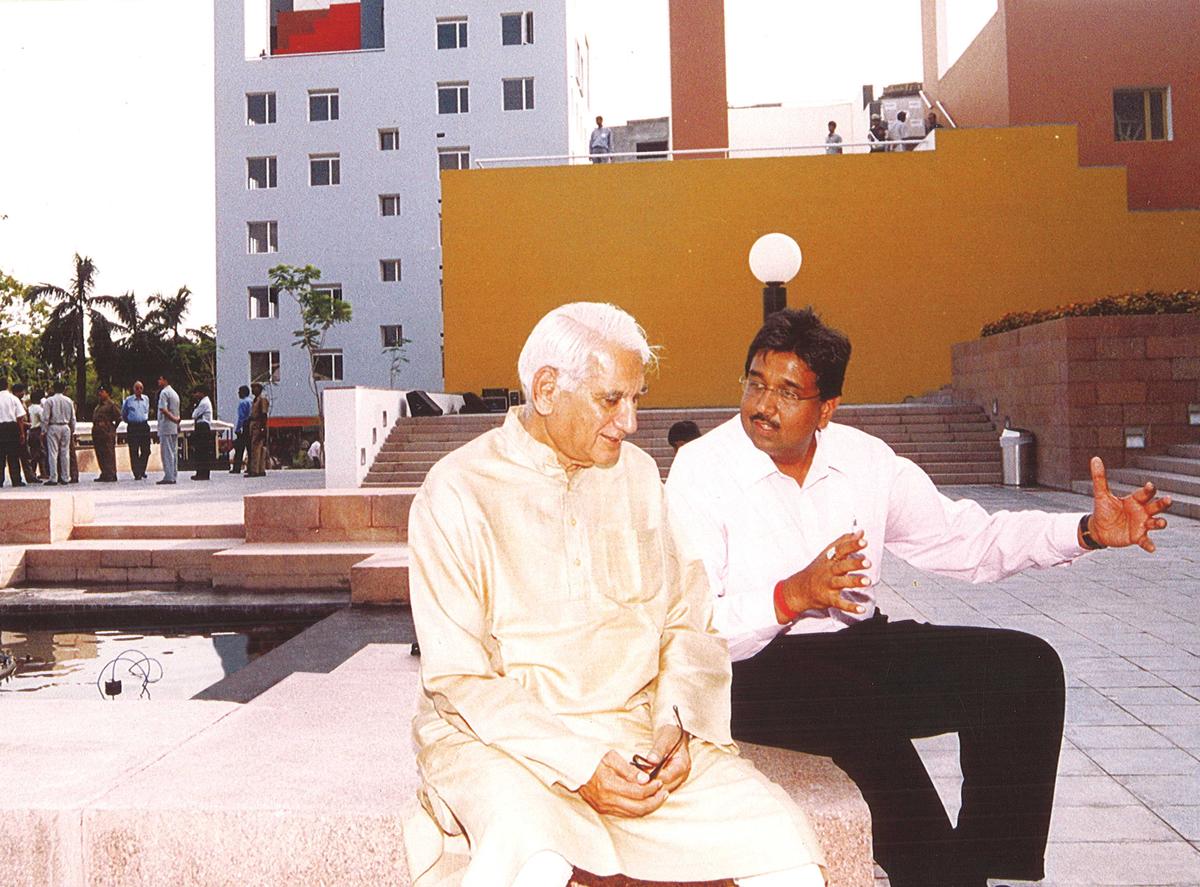
Harshavardhan Neotia, Chairman of Ambuja Neotia Group, with Charles Correa at City Centre Salt Lake Kund area.
| Photo Credit:
Special arrangement
Another collaboration that led to one of Kolkata’s earliest and most unique malls was with Charles Correa. He too had initially turned Neotia down when the group went to him with the offer of building a mall. Neotia recollected the incident at the 7th edition of the Charles Correa Memorial Lecture. “I’ve never done a mall, I do not believe in malls and do not want to design one.”
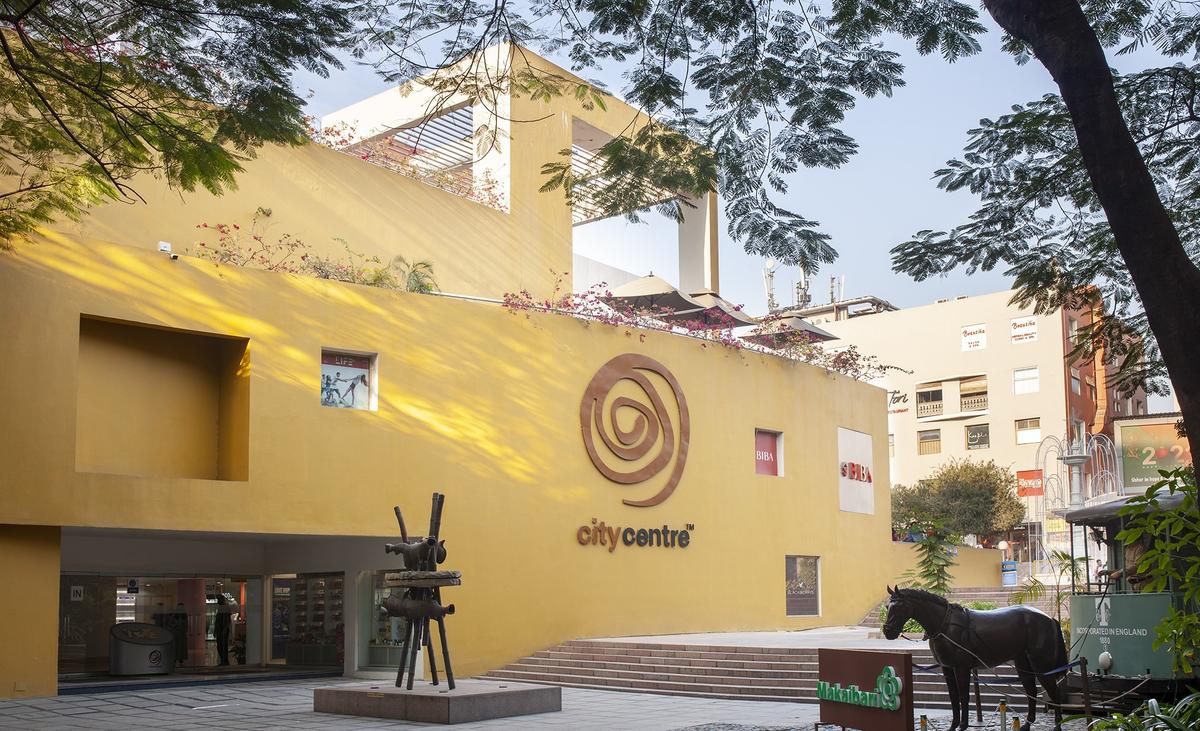
City Centre Salt Lake designed by the legendary architect Charles Correa.
| Photo Credit:
Special arrangement
How ironic perhaps that Correa’s design created not just the City Centre Mall in Kolkata but also in Patna, Raipur, Siliguri and Haldia. Unlike most malls across the country, City Centre stood out for its organic blending of community spaces and open air areas with air-conditioned stores. When Correa finally agreed to design the mall for the Neotia group he threw down quite the gauntlet.
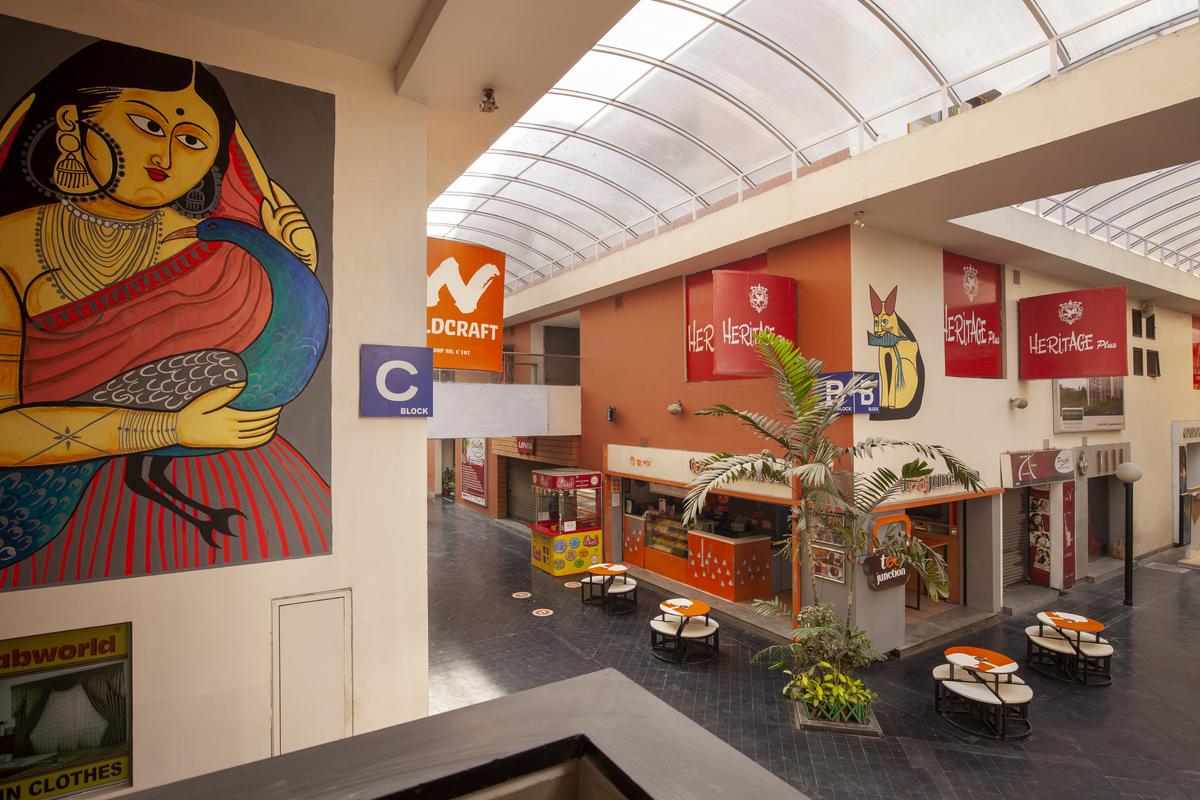
City Centre Salt Lake
| Photo Credit:
Special arrangement
“He (Correa) said we are not going to make a mall like everyone else does. I was very happy because I thought maybe he would do something new in terms of design. I did not know what I was getting into (laughs). That he would persuade me to do a bazaar crossover with a mall with community spaces within the mall was beyond my imagination. When we built the City Centre, Kolkata already had certain expectations of what a mall would look like. Ansal Plaza in Delhi and Crossroads in Mumbai had already opened so people had a sort of a set idea.” Even now nearly 20 years after the mall first opened there is something inherently organic about City Centre where the “Kund area” has an outdoor amphitheatre surrounded by stores and restaurants and one can choose between air-conditioned comfort or basking in the sun. Neotia describes Correa’s aesthetic “as one characterised by fluid spaces and a deep understanding of urban context. In City Centre, this is evident in the seamless flow between indoor and outdoor areas.”“He (Correa) said we are not going to make a mall like everyone else does. I was very happy because I thought maybe he would do something new in terms of design. I did not know what I was getting into (laughs). That he would persuade me to do a bazaar crossover with a mall with community spaces within the mall was beyond my imagination. When we built the City Centre, Kolkata already had certain expectations of what a mall would look like. Ansal Plaza in Delhi and Crossroads in Mumbai had already opened so people had a sort of a set idea.”
Even now nearly 20 years after the mall first opened there is something inherently organic about City Centre where the ‘Kund area’ has an outdoor amphitheatre surrounded by stores and restaurants and one can choose between air-conditioned comfort or basking in the sun. Neotia describes Correa’s aesthetic “as one characterised by fluid spaces and a deep understanding of urban context. In City Centre, this is evident in the seamless flow between indoor and outdoor areas.”
Neotia’s dream team, besides Doshi
1. Kerry Hill: Admired for his sensitivity to landscape, particularly in his resort designs that harmonise with their surroundings.
2. Lek Bunnag: Known for his innovative use of light and shadow, exemplified in his projects that create serene atmospheres.
3. Geoffrey Bawa: Celebrated for integrating indoor and outdoor spaces, especially in the context of tropical architecture.
4. Tadao Ando: Renowned for his mastery of concrete and minimalist aesthetics.
Often Neotia sees possibilities where others do not. When he was considering building Ffort Raichak, a resort on the Ganges in a village roughly 40 km from Kolkata, he was nearly turned away by architect Prabir Mitra. “Who would be crazy enough to go there!” Neotia remembers him saying. Twenty years on, the property is now being renovated and will be managed by IHCL once it reopens.
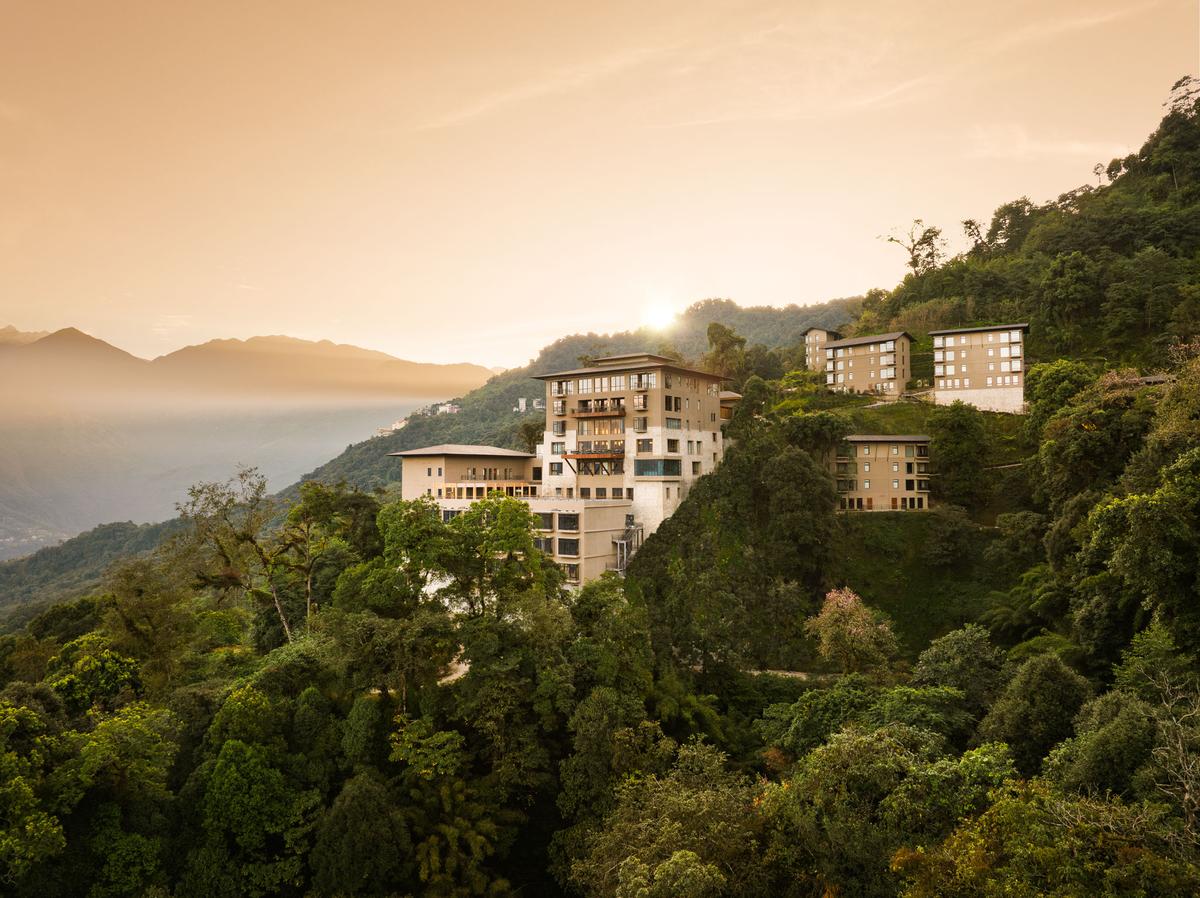
Taj Guras Kutir Resort & Spa
| Photo Credit:
Special arrangement
Taj Guras Kutir in Gangtok, Sikkim, was designed by an architect Neotia has worked with before. Sri Lankan architect Channa Daswatte created “a little bit of Sri Lanka on the Ganges” with the luxurious 16-room Ganga Kutir Resorts and Spa (2008) before he designed their Taj Guras Kutir, which opened last year. Inspired by the idea of villages and the concept of ashrams, it was Ganga Kutir that set off the slew of “kutirs” (kutir meaning hut) that the realty group later built. It’s Daswatte’s ease of thought and design that appealed to Neotia.
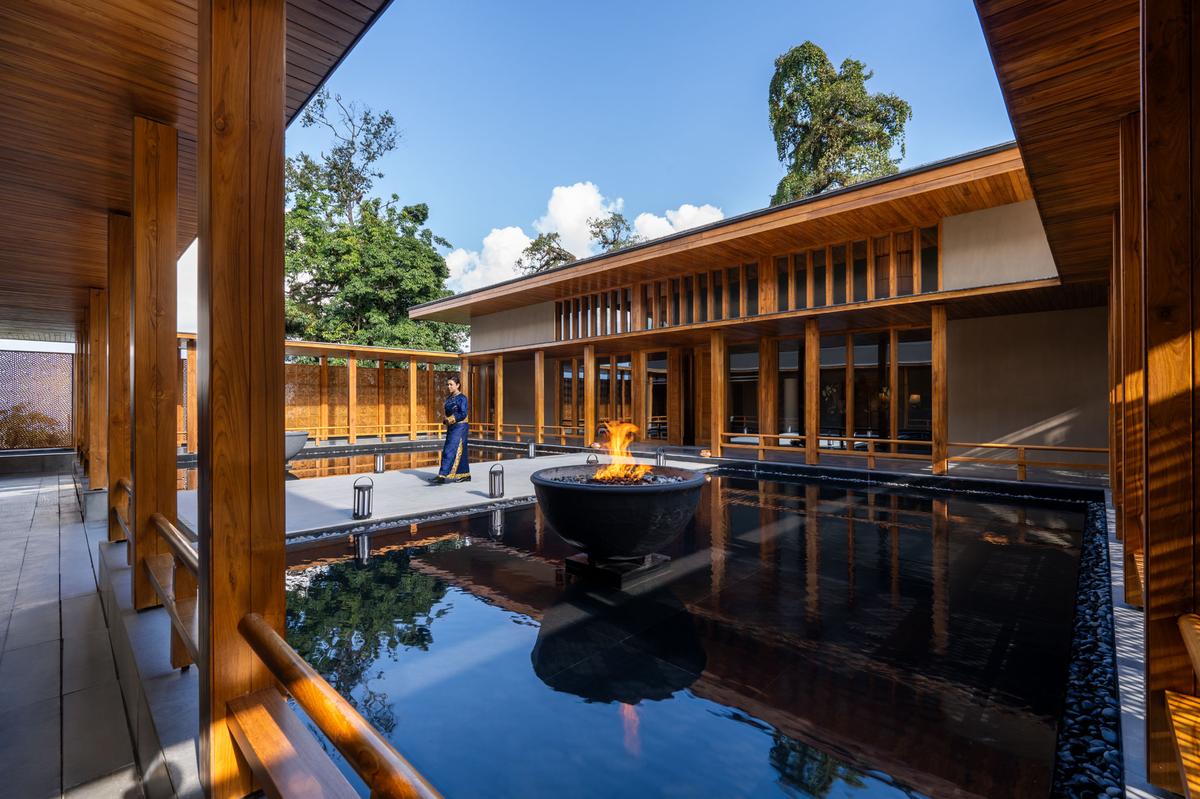
Courtyard of Taj Guras Kutir Resort & Spa
| Photo Credit:
Special arrangement
Taj Guras Kutir was designed by an architect Neotia has worked with before. Sri Lankan architect Channa Daswatte created “a little bit of Sri Lanka on the Ganges” with the luxurious 16-room Ganga Kutir Resorts and Spa (2008) before he designed their Taj Guras Kutir, which opened last year.
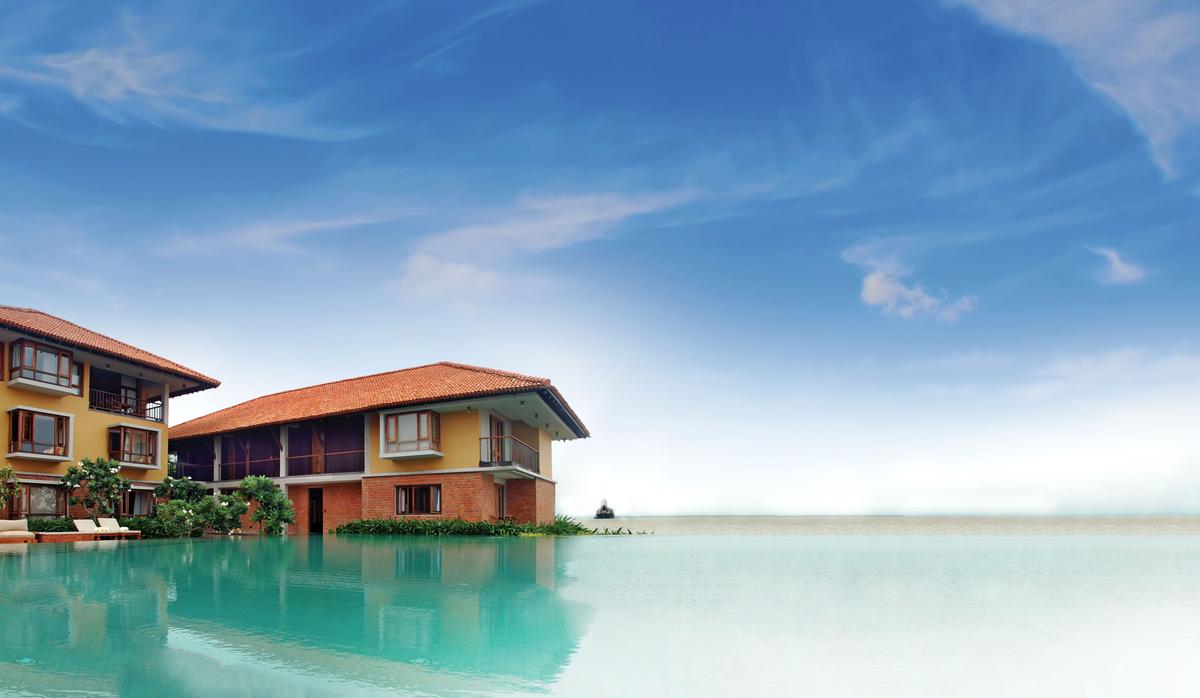
Ganga Kutir designed by renowned Sri Lankan architect Channa Daswatte
| Photo Credit:
Special arrangement
“Often he would sketch ideas on napkins or scraps of paper during meetings, capturing the essence of concepts in a very informal yet effective manner. His aesthetic reflects simplicity and elegance, with a strong emphasis on sustainability,” he says.
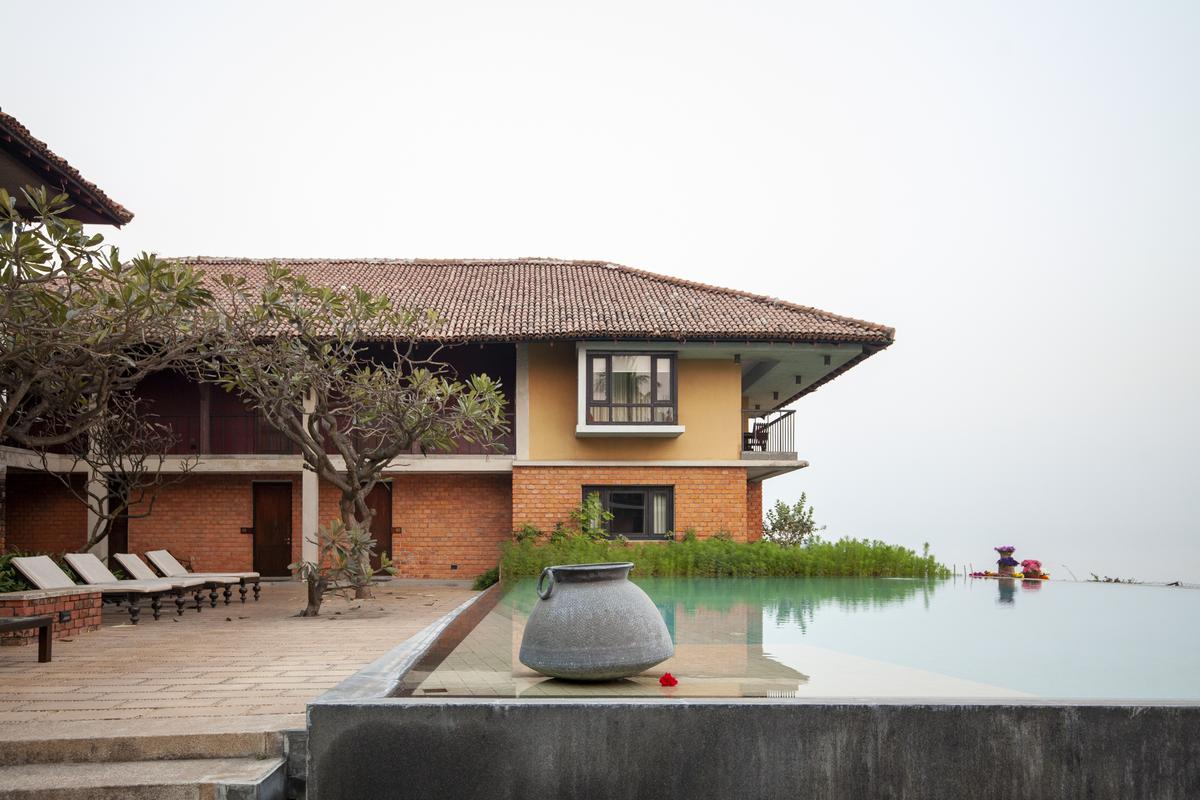
Ganga Kutir
| Photo Credit:
Special arrangement
Published – November 22, 2024 04:56 pm IST
#Harshavardhan #Neotias #lessons #persistence
